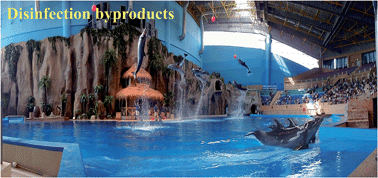Formation of disinfection byproducts in a recirculating mariculture system: emerging concerns
Abstract
Disinfection is commonly employed in recirculating mariculture systems (RMS) to control animal diseases and improve seawater quality; however, little is known about the occurrence of disinfection byproducts (DBPs) formed in such RMS. Beijing Aquarium is a typical RMS with artificially prepared seawater and mainly adopts a decentralized treatment strategy for different animal tanks, including sand filtration, foam fractionation, and disinfection (O3, UV, and O3/ClO2). This study reveals that the adopted disinfection processes were highly effective in controlling marine heterotrophic bacteria; however, some concerns were raised on the formation of various kinds of DBPs, including secondary oxidants, inorganic oxyanions, and hazardous organic species. Free chlorine and free bromine were generated from ozonation at health-relevant concentrations. High concentrations of BrO3− and ClO3− were formed in mammal tanks, which exceeded the USEPA-regulated maximum contaminant level (MCL) for drinking water by 19–25 and 52–54 times, respectively. Extremely high concentrations of NO3− were detected in mammal tanks, which considerably exceeded the MCL regulated by the Sea Water Quality Standard of China for the mariculture industry (Class II) by about 1100 times. Undoubtedly, the presence of various DBPs poses serious health threats to aquarium animals. To solve these problems, potential control measures for DBPs are proposed.


 Please wait while we load your content...
Please wait while we load your content...